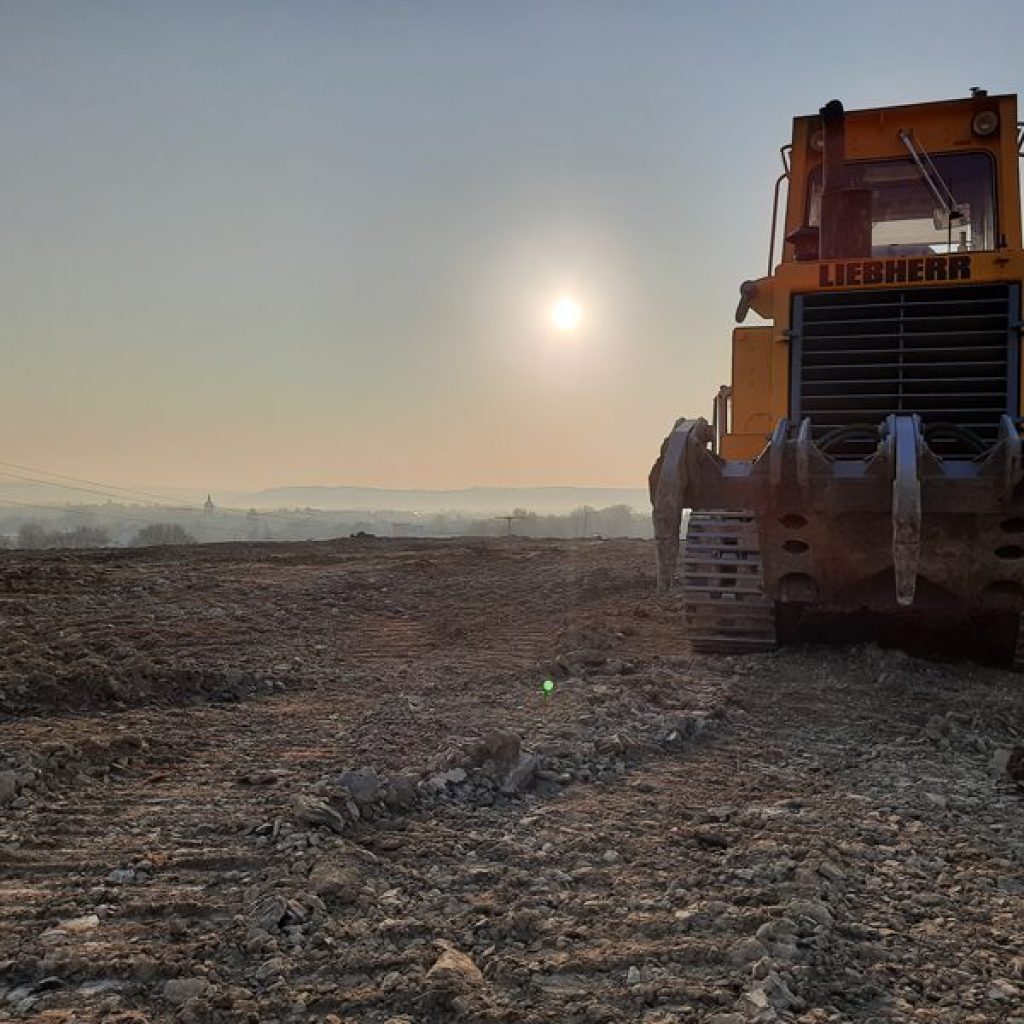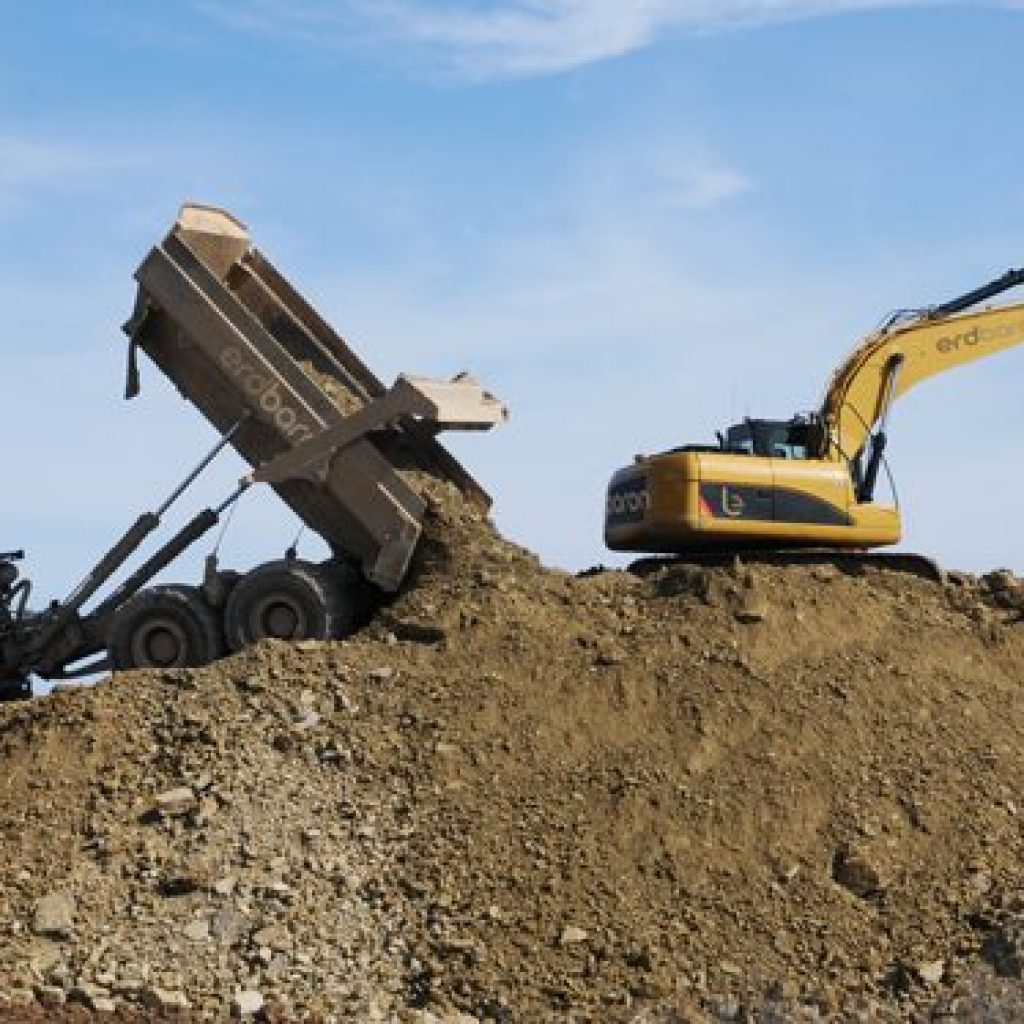Disposing of excavated earth
Excavated soil does not necessarily have to be waste! For us, soil is a raw material!
We dispose of your excavated earth in an environmentally friendly and sustainable way.
Disposing of excavated earth

Excavated soil does not necessarily have to be waste! For us, soil is a raw material!
We dispose of your excavated earth in an environmentally friendly and sustainable way.
Disposing of excavated earth
Disposal routes for excavated earth are in short supply. We have accepted this challenge!
We dispose of your excavated earth in the most economical and environmentally friendly way.
We are constantly looking for new disposal methods to ensure the reliable disposal of excavated earth.
During lengthy approval procedures, we create new recycling options and make a significant contribution to stabilising the costs of disposing of excavated earth.
With new recycling options, we are conserving the capacity of landfill sites for waste that can no longer be recycled.
Utilisation
The recycling of excavated earth and building rubble is our top priority.
In accordance with the Recycling Management Act and in the interests of sustainable waste management, we always endeavour to recycle soil.
By utilising soil elsewhere, we can reduce costs compared to landfill disposal.
In most cases, however, utilisation in a recycling process requires the addition of binding agents or other additives.


Elimination
The only remaining disposal method is disposal in a landfill.
If there is no other option, we dispose of excavated soil at a landfill site. Disposal in a landfill is the last resort for disposing of excavated earth.
The costs for disposal in a landfill are usually significantly higher than the recycling and reuse of excavated soil.
Proof of disposal
We confirm the proper disposal of your excavated earth with a certificate of disposal and relieve you of your legal obligations.
Disposing of excavated soil ... what you need to know!
- What does the disposal of excavated earth cost?
The costs for the disposal of excavated soil depend largely on the disposal method. This in turn depends crucially on the following factors: Pollutants, foreign matter and soil type.
The lower the values of the measured pollutants and the fewer foreign substances, the lower the costs for the disposal of the excavated soil.
Geochemical loads
Every soil contains environmentally harmful substances. These can either be anthropogenic (originating from humans) or geogenic (naturally occurring). If the limit values of the respective parameters are exceeded, this is referred to as contaminated soil. Disposal is then only possible to a limited extent. The costs for the disposal of this excavated soil will be significantly higher.
The lower the loads, the lower the costs for disposing of the excavated soil.
Soil type
The type of soil does not always play a role when it comes to the cost of disposing of excavated soil. However, in some cases, especially when recycling elsewhere, the costs can be lower if the soil is particularly suitable for recycling elsewhere.
Foreign admixtures
Further costs may be incurred if the soil contains foreign matter such as bricks, concrete residue or plastic parts from pipes. Many disposal centres are not permitted to accept excavated soil containing foreign matter. The number of possible disposal routes is restricted. The costs for disposal are correspondingly higher.
The fewer foreign components in the excavated earth, the lower the costs.
- How can you dispose of excavated earth cheaply?
Plan disposal at an early stage
The disposal of excavated soil is complicated. Many requirements must be met in order to ensure proper disposal. In addition, good cooperation between all parties involved is required in order to keep disposal as favourable as possible. To ensure that disposal runs as smoothly and favourably as possible, it is advisable to start planning at an early stage.
Separation by soil type
Disposal is more favourable if the soil is already separated by soil type during excavation. Each type of soil has different properties that are decisive for recycling. For example, topsoil can only be compacted to a limited extent and can therefore not be used for the production of subsoil. If the excavated material is separated by soil type during excavation, it can be disposed of favourably.
Avoid foreign substances
High costs for the disposal of excavated earth can also be avoided by avoiding or sorting out any foreign matter during the excavation process. Foreign matter such as bricks, concrete residues, sewage pipes or roots reduce the possibilities of disposal, which virtually rules out favourable disposal.
- Where can you dispose of excavated soil?
Excavated earth can be disposed of by the earthworks contractor, a waste disposal company or the building owner himself. The following disposal methods are available.
Utilisation
Excavated soil is considered to be recycled if it is put to a new use elsewhere. This is known as reutilisation.Examples:
- Earth filling
- Production of building ground
- Backfilling of pits and quarries
- Construction of buildings
- Utilisation as a raw material for production (e.g. products made of clay or loam)
Elimination
The disposal of excavated soil occurs when the soil cannot be used for other purposes. For example, if it is unusable due to physical or chemical properties.
Soil is generally disposed of in landfills if recycling is impossible or unreasonable.
